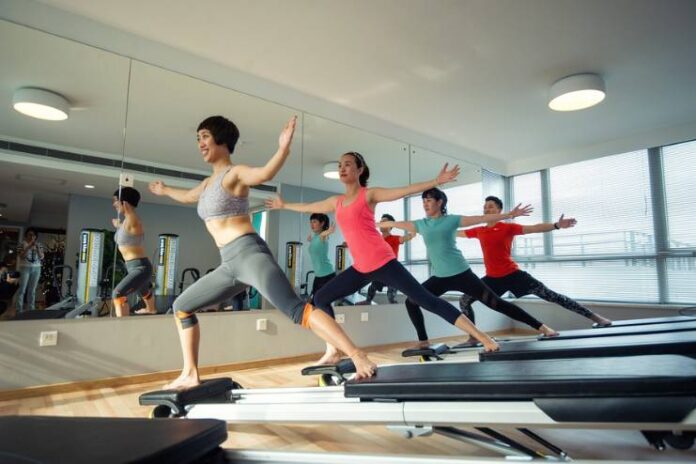Affiliate Disclaimer
Some links in this article are affiliate links. We may earn a small commission if you make a purchase through these links, at no extra cost to you. We only recommend products we find useful to our readersCore strength is fundamental to overall fitness and optimal posture. It supports your spine, improves balance, and enhances performance in various physical activities. Stronger core muscles provide better stability and significantly lessen the possibility of injury. Focus on working out your core on Tuesdays through a specialized Pilates workout that will help you firm up and tone those much-needed core muscles. Core training in Pilates is unique because controlled movements are the key to using the correct muscle engagement. A method that tapers the abdominal muscles, enhancing flexibility and coordination. One can practice this core-focused Pilates daily for one’s posture and to gain physical strength.
Warm-Up Routine
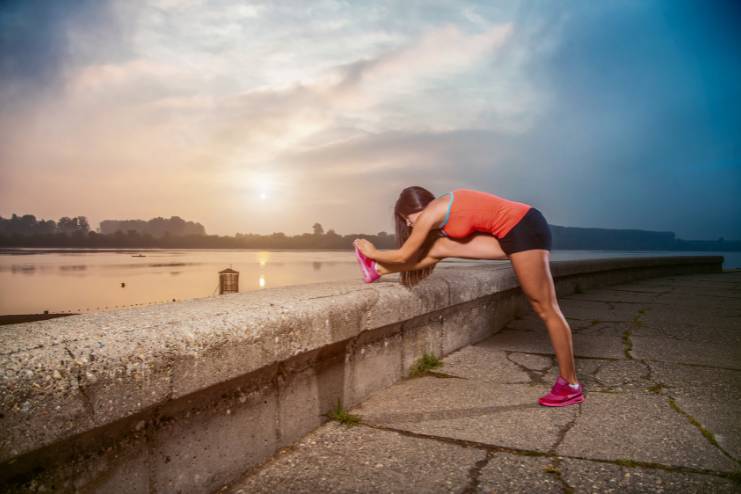
Start your session with a 5-minute Pilates warm-up to prepare your core muscles. Begin with pelvic tilts:
- Lie on your back with your knees bent and feet flat on the floor.
- Gently rock your hips towards your head, pressing your lower back onto the mat, and then return to the neutral position.
- Perform 5-10 repetitions, focusing on controlled movements and core engagement.
Follow this with gentle spine twists:
- Sit tall with legs extended and arms out to the sides.
- Inhale to lengthen your spine, exhale, and twist your torso to one side, keeping your hips stable.
- Hold a breath, then return to the center and repeat on the other side.
- Complete 5 twists per side.
These exercises develop core activation and flexibility, setting a strong core foundation for your Pilates workout.
Exercise 1: The Hundred
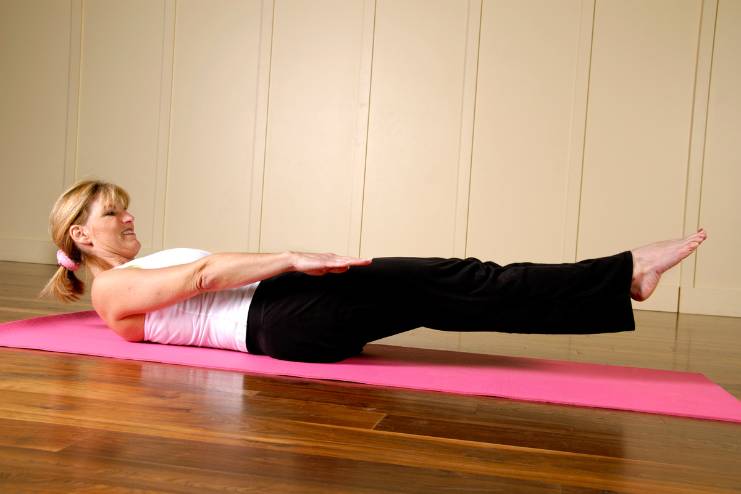
The Pilates Hundred is a classic exercise to build core strength and core endurance.
- Begin by lying on your back with your legs raised to a 45-degree angle or bent at 90 degrees in a tabletop position.
- Inhale deeply and exhale as you lift your head, shoulders, and upper back off the mat, engaging your abdominal muscles.
- Extend your arms straight, a few inches off the floor, and start pumping them up and down in small, controlled movements.
- Coordinate the pumps with your breath. Inhale for five pumps, then exhale for five.
- Complete 10 cycles, making a total of 100 arm pumps.
- Perform 1 set of 100 pumps, adjusting the leg position for difficulty.
This exercise enhances core stability and improves breath control.
Exercise 2: Roll-Up
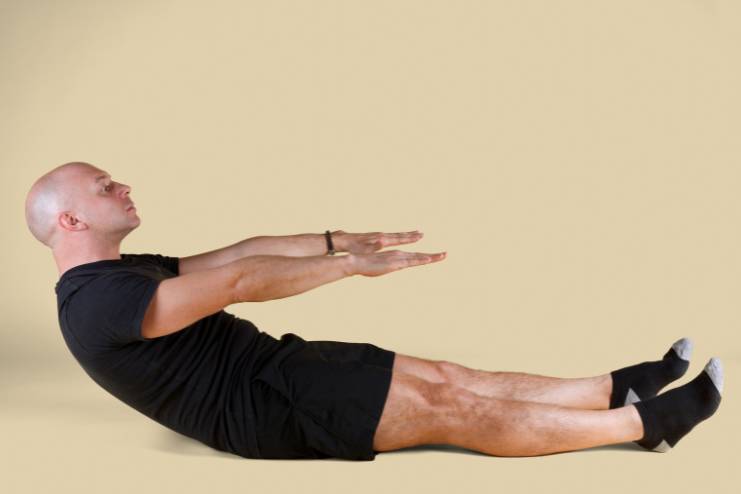
The Pilates Roll-Up is a powerful abdominal workout to enhance core strength and spinal flexibility.
- Begin by lying on your back with your legs straight and arms extended overhead.
- Inhale as you lift your arms towards the ceiling, letting your chin drop.
- Exhale and slowly curl your upper body forward, reaching toward your toes in a smooth, controlled motion.
- Keep your abs engaged and legs grounded.
- Inhale deeply as you start rolling back down, vertebra by vertebra, and exhale to complete the descent with your arms returning overhead.
- Perform 3 sets of 10 reps to build core endurance and improve flexibility.
This exercise mobilizes the spine and effectively targets the abdominal muscles.
Exercise 3: Single Leg Circles
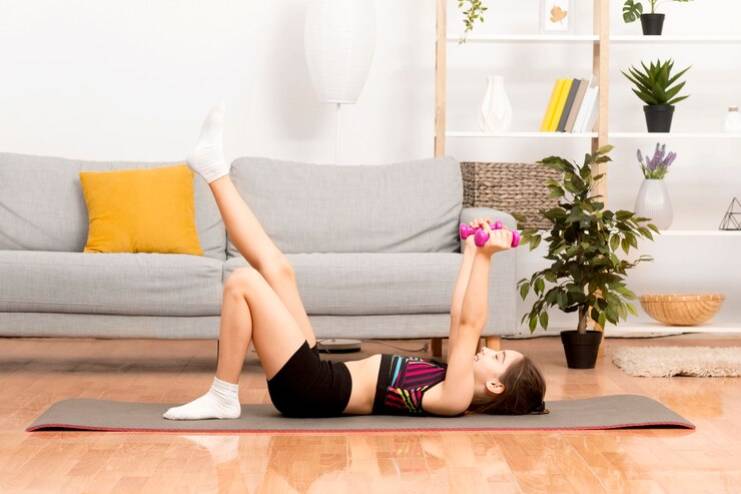
Single Leg Circles are excellent for improving hip stability and core strength.
- To perform this exercise, start by lying on your back with both knees bent, arms by your sides, and your pelvis in a neutral position.
- Engage your core, and inhale to prepare.
- Exhale as you float one leg into a tabletop position.
- Inhale and hold, then exhale as you extend your leg straight up.
- Begin circling the leg clockwise for 30 seconds, keeping your core stable and pelvis still.
- Reverse the direction and circle counterclockwise for another 30 seconds.
- Repeat on the other leg.
- Perform 3 sets of 10 reps per leg to effectively work your hip joints and core.
Single-leg circles promote hip mobility, elongate the hamstrings and iliopsoas, and dynamically challenge spine-pelvis stability.
Exercise 4: Criss-Cross
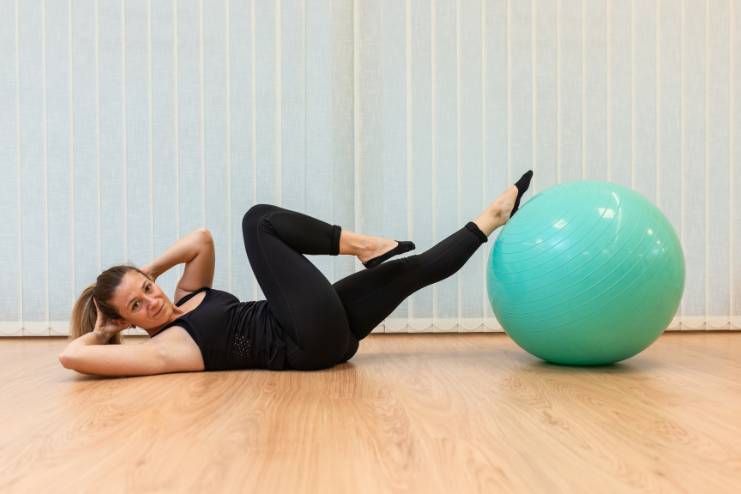
The Criss-Cross exercise is a fundamental workout to target the oblique muscles and enhance rotational strength.
- To perform the Criss-Cross, lie on your back with your knees bent and legs in a tabletop position.
- Place your hands behind your head with elbows wide.
- Inhale to prepare, then exhale as you lift your head, neck, and shoulders off the mat.
- Extend one leg straight while twisting your torso towards the opposite bent knee.
- Inhale as you come back to the center, and then exhale as you switch sides, extending the other leg and rotating your torso towards the opposite knee.
- Perform 3 sets of 12 reps per side to build core strength and enhance overall abdominal definition.
- Keep the movements controlled, and avoid using momentum to maximize the exercise’s benefits.
This exercise engages the oblique muscles, which are associated with flexion and rotation of the spine. It also strengthens the hip flexors while providing resistance to the pelvis in terms of stability.
Exercise 5: Plank to Pike
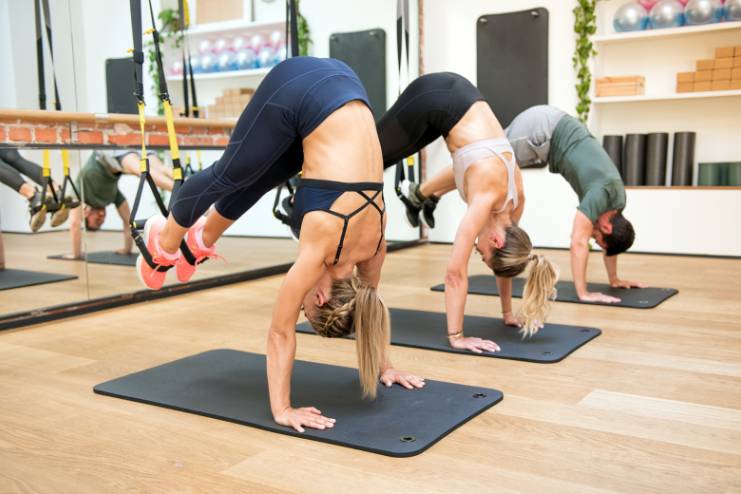
The Plank to Pike exercise is an excellent move for enhancing core and shoulder strength.
- To perform this exercise, start in a plank position with your hands directly under your shoulders and your body in a straight line.
- Engage your core, and use your abdominal muscles. Lift your hips up towards the ceiling into a pike position, forming an inverted V shape with your body.
- Hold the pike for a moment, then slowly lower back into the plank position.
- Aim for 3 sets of 10 reps, ensuring each movement is controlled to maximize the benefits and reduce the risk of injury.
This core and shoulder workout strengthens the core muscles, works the shoulders, and stretches the hamstrings.
Exercise 6: Side Plank
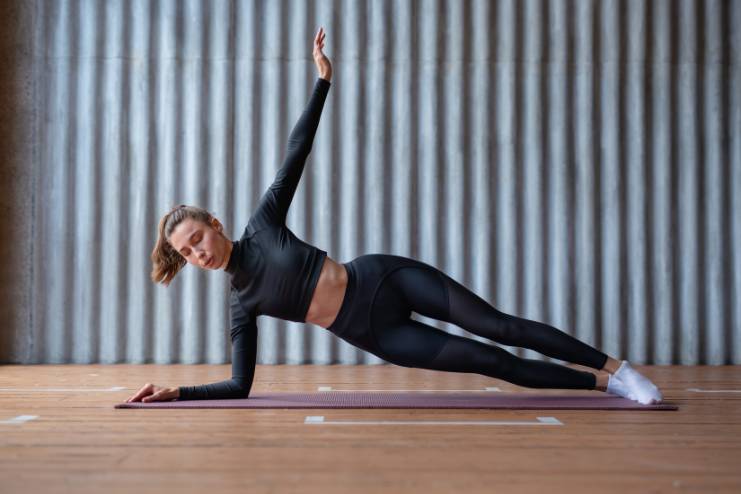
The Side Plank is a powerful exercise for building lateral core strength and enhancing shoulder stability.
- To perform a Side Plank with proper form, start by lying on your side with your legs straight and feet stacked on top of each other.
- Place your bottom elbow directly under your shoulder, forming a straight line from your head to your feet.
- Engage your core and lift your hips off the ground, maintaining a straight body line.
- Keep your neck neutral and shoulders stacked.
- Hold this position for 30-60 seconds, ensuring your hips do not sag and your body remains stable.
- Repeat on the opposite side.
- Performing 3 sets on each side will provide a comprehensive workout for your lateral core and shoulder muscles, enhancing overall core stability and reducing the risk of back injuries.
This exercise targets the oblique muscles, the muscles along the sides of your core, which are essential for trunk rotation and lateral stability. It also strengthens the shoulder stabilizers and improves balance.
Cool Down and Stretching
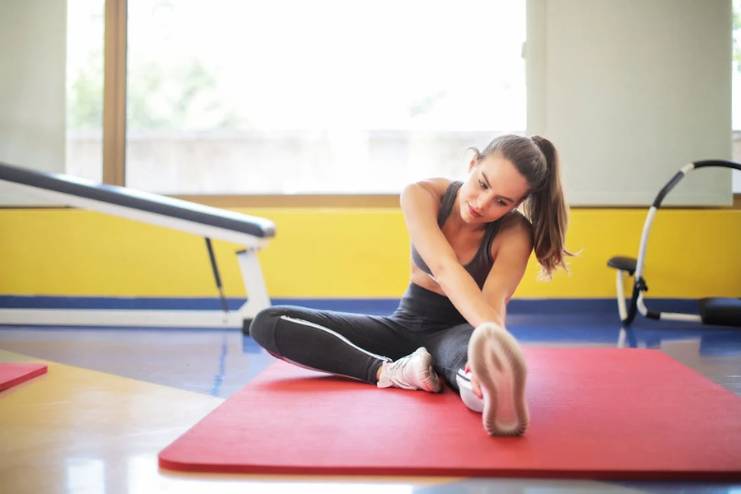
After the session, a 5-10 minute Pilates cool-down routine with static stretching exercises is essential for muscle recovery and flexibility.
- Start with a seated forward fold. Sit with legs extended, hinge at the hips, and reach for your toes, holding for 30 seconds to stretch the hamstrings and lower back.
- Next, transition into a seated spinal twist.
- Sit with one leg extended and the other bent, placing the opposite arm outside the bent knee.
- Twist gently to stretch the lower back and obliques, holding for 30 seconds on each side
- Move into the cat-cow stretch for the core and spine.
- On all fours, alternate between arching your back (cat) and dipping it (cow), holding each position for 5 seconds and repeating 10 times.
- Finish with a child’s pose. Kneel, sit back on your heels, and extend your arms forward on the mat.
- Hold this pose for 1 minute to stretch the lower back and relax the body.
- This routine will help your muscles recover and maintain flexibility.
Conclusion
Adding a core-centered Pilates session to your weekly fitness routine has many advantages. It increases core strength, enhances flexibility, aligns the posture, and may perhaps reduce the potential for injury. Maintaining core engagement will facilitate proper spinal positioning and general stability.
Long-term Pilates practice will not only help you tighten your core but also improve your mind-body connection. With continued practice, you will improve your balance, coordination, and muscle.
References
- https://www.verywellfit.com/how-to-do-pelvic-tilts-3566908
- https://www.dragonflypilates.com.au/blog/pilates-spine-twist
- https://www.verywellfit.com/how-to-do-the-pilates-hundred-2704677
- https://www.verywellfit.com/how-to-do-pilates-roll-up-2704679
- https://pilateslive.co.uk/pilates-exercises/how-to-do-a-pilates-one-leg-circle-exercise/
- https://complete-pilates.co.uk/criss-cross-exercise/
- https://www.rosannadavisonnutrition.com/pilates-plank-pike-combo-brilliant-core-exercise-home/
- https://www.healthline.com/health/side-plank
In this Article















